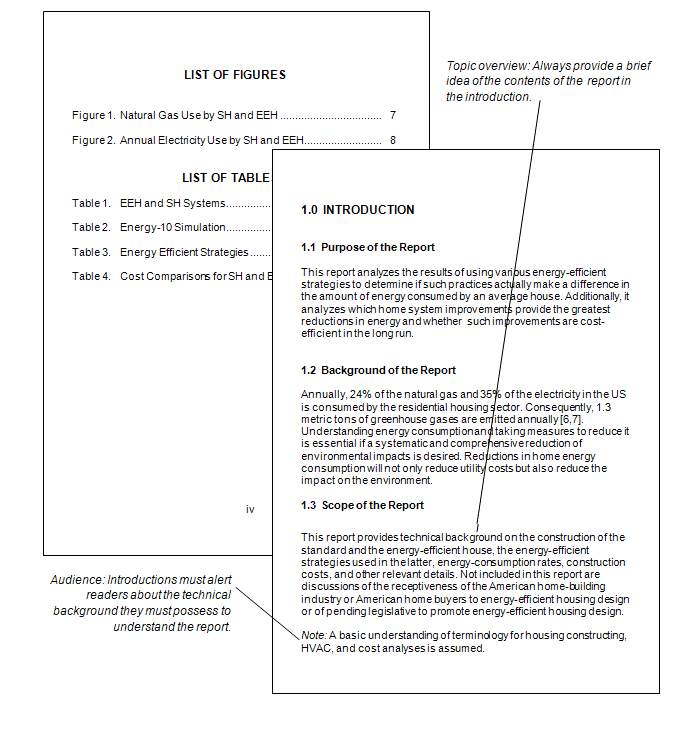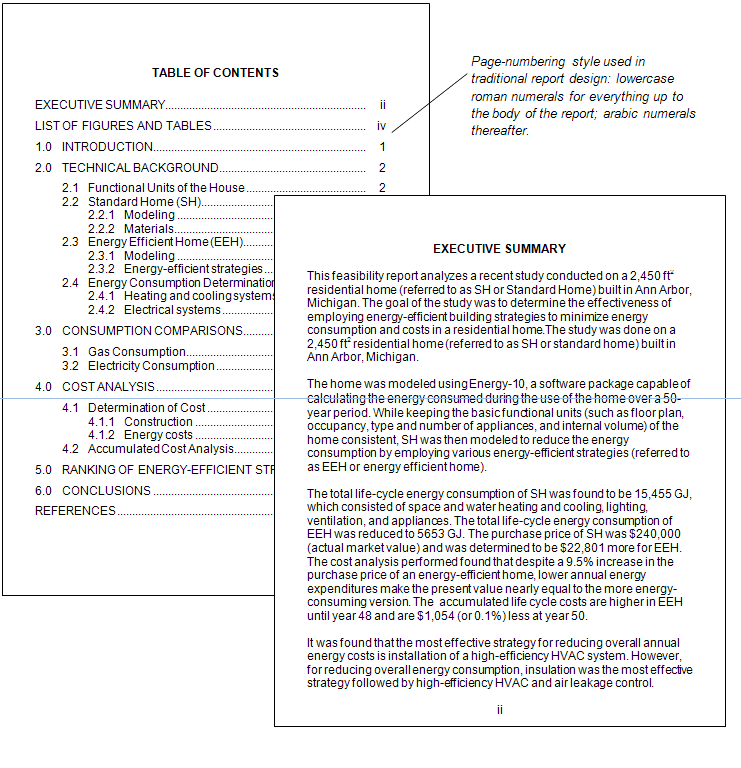6.4: Formal Report—Table of Contents and List of Figures
Learning Objectives
- Identify the role and format of a table of contents and list of figures
What Is a Table of Contents?
The table of contents shows readers what topics are covered in the report, how those topics are discussed (the subtopics), and on which page numbers those sections and subsections start.
In creating a table of contents, you have a number of design decisions:
- Levels of headings to include: In longer reports, consider including only the top two levels of headings. This keeps the table of contents from becoming long and unwieldy. The table of contents should provide an at-a-glance way of finding information in the report quickly.
- Indentation, spacing, and capitalization: Notice in the illustration below that items in each of the levels of headings are aligned with each other. Although you can’t see it in the illustration, page numbers are right-aligned with each other.
- Vertical spacing: Notice that the first-level sections have extra space above and below, which increases readability.
Using the automatic table of contents creator in Word can help you produce a clean, professional document. Make sure the words in the table of contents are the same as they are in the text. As you write and revise, you might change some of the headings—don’t forget to change the table of contents accordingly.
Example: Table of Contents
What Is a List of Figures?
If your document has more than two figures or tables, create a separate list of figures. The list of figures has many of the same design considerations as the table of contents. Readers use the list of figures to quickly find the illustrations, diagrams, tables, and charts in your report.
Complications arise when you have both tables and figures. Strictly speaking, figures are illustrations, drawings, photographs, graphs, and charts. Tables are rows and columns of words and numbers; they are not considered figures.
For longer reports that contain dozens of figures and tables each, create separate lists of figures and tables. Put them together on the same page if they fit, as shown in the illustration below. You can combine the two lists under the heading, “List of Figures and Tables,” and identify the items as figure or table as is done in the illustration below.
Example: List of Figures

References & Attributions
Attributions
Content is adapted from Technical Writing by Allison Gross, Annemarie Hamlin, Billy Merck, Chris Rubio, Jodi Naas, Megan Savage, and Michele DeSilva, which is is licensed under a Creative Commons Attribution-NonCommercial-ShareAlike 4.0 International License, except where otherwise noted.
Original content for this page was derived by Annemarie Hamlin, Chris Rubio, and Michele DeSilva, Central Oregon Community College from Online Technical Writing by David McMurrey – CC: BY 4.0


